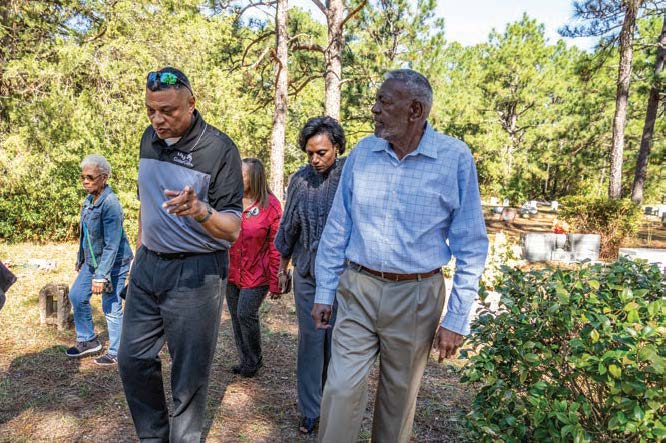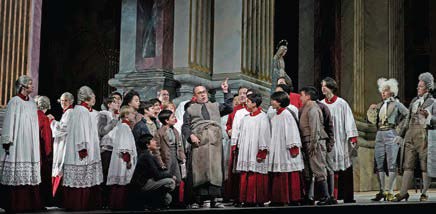SIMPLE LIFE

The Sacred Month
A time to go inside
By Jim Dodson
Long ago, I decided that November is the most sacred month.
To my way of thinking, on so many levels, no other holds as much mystery, beauty and spiritual meaning as the 11th month of the calendar.
The landscape gardener in me is always relieved when the weather turns sharply cooler and there’s an end to the constant fever of pruning and weeding, plus fretting over plants struggling from the heat and drought of a summer that seems to grow more punishing each year.
Once the leaves are gathered up, and everything is cut back and mulched for the winter, not only does my planning “mind” kick in with what’s to be done for next year, but the beautifully bare contours of the earth around me become a living symbol — and annual reminder — of life’s bittersweet circularity and the relative brevity of our journey through it.
The hilly old neighborhood where we reside is called Starmount Forest for good reason, owing to the mammoth oaks and sprawling maples that kindly shelter us with shade in summer and stand like druid guardians throughout the year, season after season. Beginning this month, the skies become clearer and the nighttime stars glimmer like diamonds on black velvet through their bare and mighty arms, hence the neighborhood’s name: a “mount” where the “stars” shine at night.
Of course, there is risk living among such monarchs of the forest. Every now and then, one of these elderly giants drops a large limb or, worse, topples over, proving their own mortality, sometimes taking out part of a house or a garage, or just blocking the street until work crews arrive with chainsaws. As far as I know, no one has ever been seriously injured or killed by our neighborhood trees, though the growing intensity of summer storms seems to elevate the danger. Lately, some neighborhood newcomers, prefiguring catastrophe, have taken to cutting down their largest oaks as an extra measure of security in a world where, as actuaries and sages agree, there really is no guaranteed thing. In the meantime, the rest of us have made something of a Faustian bargain with these soulful giants for the privilege of living among them. We care for them and (sometimes) they don’t fall on us.
Speaking of “soul,” no month spiritually embodies it better than November.
All Souls’ Day, also called The Commemoration of All the Faithful Departed, comes on the second day of the eleventh month, a day of prayer and remembrance for the faithful departed observed by Christians for centuries. The day before All Souls’ is All Saints’ Day, also known as All Hallows’ Day or the Feast of All Saints, a celebration in honor of all the saints of the church, whether they are known or unknown.
Every four years, the first Tuesday that follows the first Monday of November is our national Election Day, a day considered sacred by citizens who believe in the right to vote their conscience and tend the garden of democracy.
Congress established this curious weekday of voting in 1845 on the theory that, since a majority of Americans were (at that moment) farmers or residents of rural communities, their harvests would generally have been completed, with severe winter weather yet to arrive that could impede travel. Tuesday was also chosen so that voters could attend church on Sunday and have a full day to travel to and from their polling place on Monday, arriving home on Wednesday, just in time for traditional market day across America.
Like daylight saving time (which, by the way, ends Sunday, Nov. 3) some critics believe “Tuesday voting” is a relic of a bygone time, requiring modern voters to balance a busy workday with the sacred obligation of voting. For what it’s worth, I tend to fall into the camp that advocates a newly established voting “holiday weekend” that would begin with the first Friday that follows the first Thursday of November, allowing three full days to exercise one’s civic obligation, throw a nice neighborhood cookout and mow the lawn for the last time.
While we’re in the spirit of reforming the calendar, would someone please ditch daylight saving time, a genuine relic of the past that totally wrecks the human body’s natural circadian rhythms? Farmers had it right: Rise with the sun and go to bed when it sets.
Next up in November’s parade of sacred moments is Veterans Day, which arrives on the 11th, a historic federal holiday that honors military veterans of the U.S. Armed Forces, established in the aftermath of World War I with the signing of the Armistice with Germany that went into effect at the 11th hour of the 11th day of the 11th month of 1918. In 1954, Armistice Day was renamed Veterans Day at the urging of major U.S. military organizations.
November’s gentler sunlight — at least here in the Northern Hemisphere — feels like a benediction falling across the leafless landscape, quite fitting for a month where we go “inside” literally and figuratively to celebrate the bounty of living on Earth. In the Celtic mind, late autumn is the time of the “inner harvest,” when gratitude and memory yield their own kind of fertility.
“Correspondingly, when it is autumn in your life, the things that happened in the past, the experiences that were sown in the clay of your heart, almost unknown to you, now yield their fruit,” writes the late Irish poet John O’Donohue.
First shared by Squanto and the pilgrims in 1621, Thanksgiving was decreed “a day of public Thanksgiving and Prayer” on November 26, 1789, by George Washington. Then it was proclaimed a national holiday on the last Thursday of November by Abe Lincoln. Finally, during the Great Depression in 1939, it was moved to the third Thursday of the month by Franklin Roosevelt to extend Christmas shopping days. But for most folks, the observance of Thanksgiving embodies, I suspect, many of the things we hold sacred in life:
The gathering of families, memories of loved ones, lots of laughter, good food and friendly debates over football and politics.
I give extra thanks for Thanksgiving every year, especially the day after when some who hold bargain-hunting on “Black Friday” a sacred ritual thankfully disappear and I am free to enjoy my favorite “loaded” turkey sandwich and take a nice long afternoon nap by the fire to celebrate my favorite holiday.










































